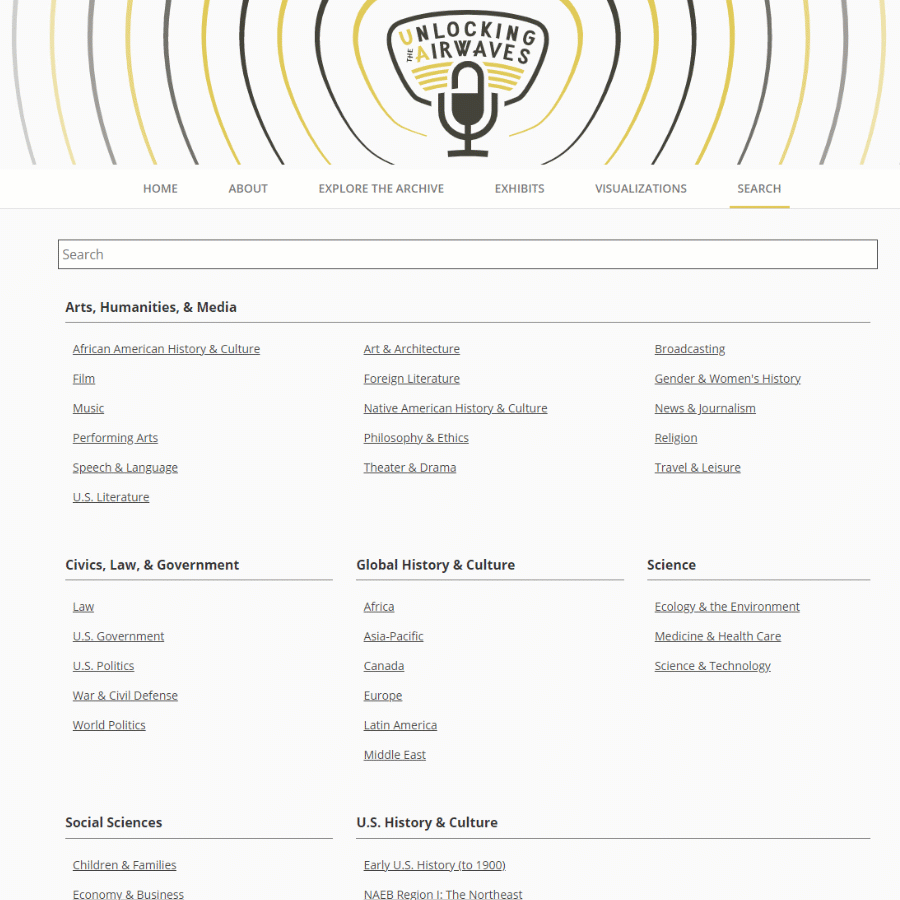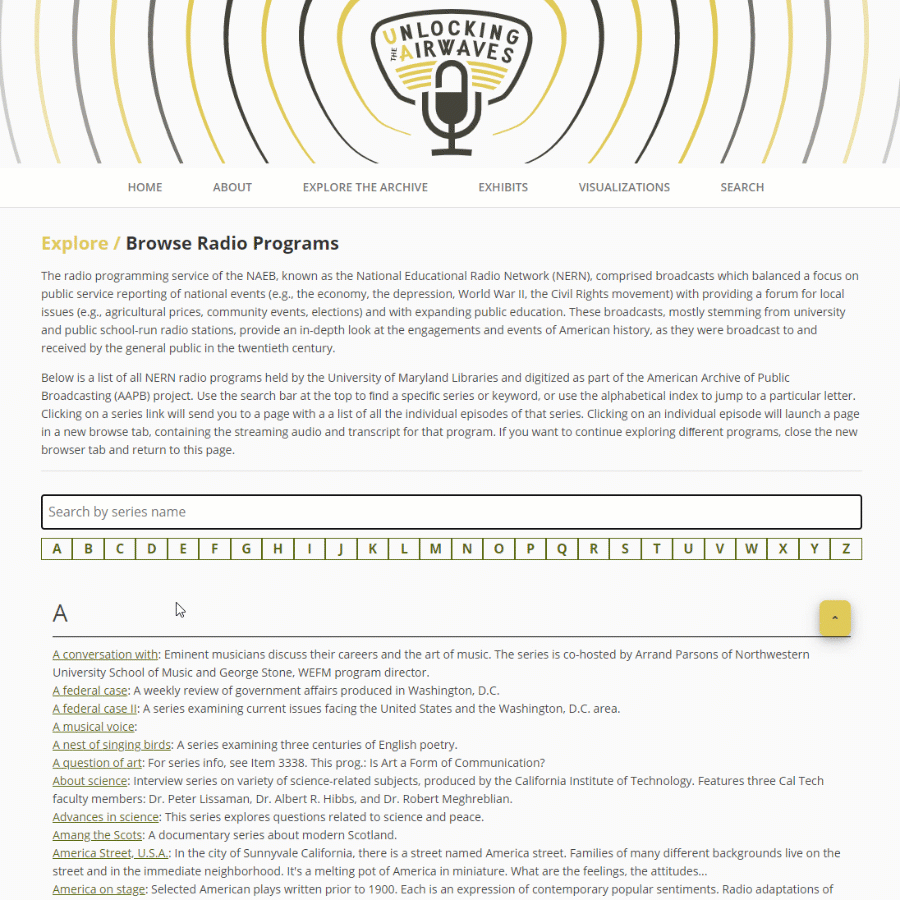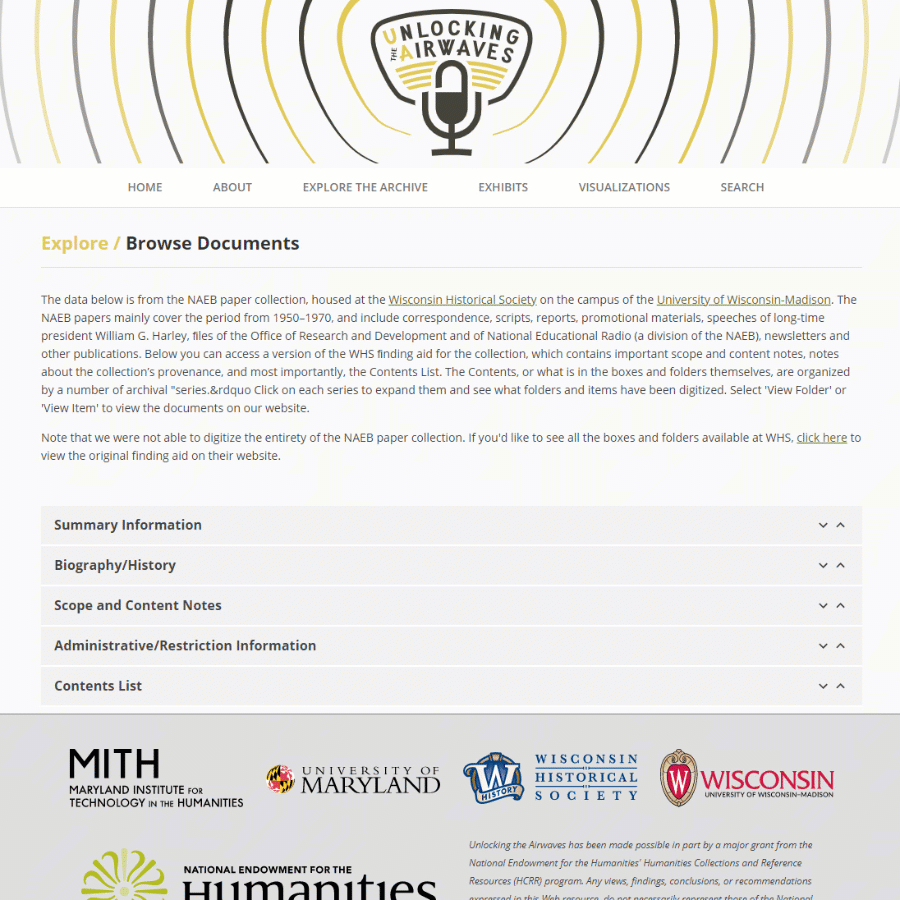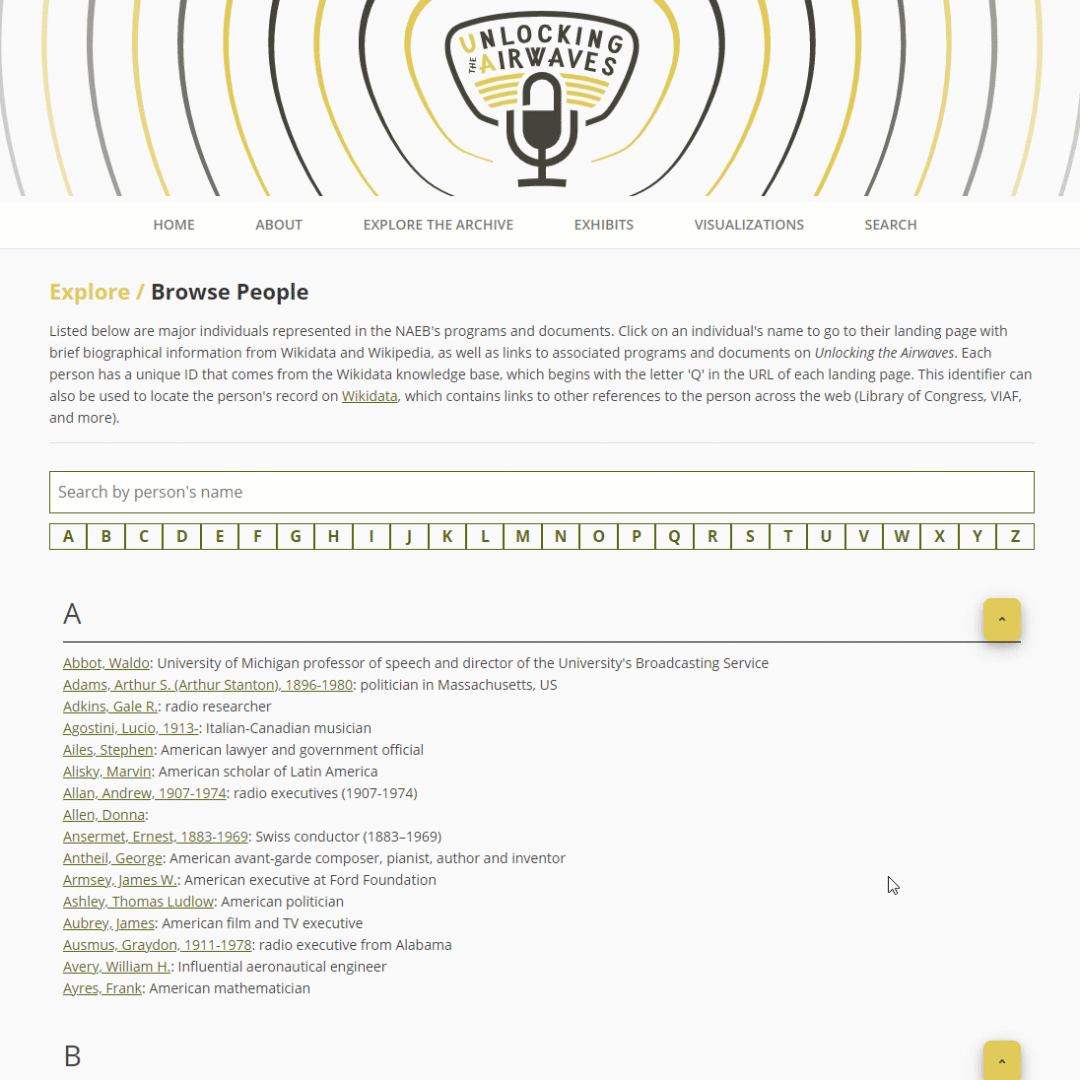Explore the Archive
There are four different ways you can explore the NAEB collections
1. Search the Collections
The Search page is a way you can explore the entire Unlocking the Airwaves collection, including NAEB radio programs and related archival materials, from one point of entry. You may either browse the collection using what are called ‘facets’ (pre-defined categories and queries) on the left side of the screen, or you can conduct an Advanced Search of the whole collection using keywords, names of people or organizations, geographic regions, subjects, or time periods. The Search page is broadly useful to find a wide variety of materials in the collections, but if you’d prefer a more serendipitous approach, you may also browse the collections by either radio programs, documents, people, or organizations. Read below for more on how to explore by browsing.
Search the Collections
2. Browse Radio Programs
The radio programming service of the NAEB, known as the National Educational Radio Network (NERN), comprised broadcasts which balanced a focus on public service reporting of national events (e.g., the economy, the depression, World War II, the Civil Rights movement) with providing a forum for local issues (e.g., agricultural prices, community events, elections) and with expanding public education.
Click the 'Browse Radio Programs' button to see a list of all the program series in the NAEB collections, sorted and grouped alphabetically by title. Type in the search box if there is a particular title or keyword you're looking for.
Browse Programs
3. Browse Documents
Click the 'Browse Documents' button to browse materials from the NAEB paper collection, housed at the Wisconsin Historical Society (WHS) on the campus of the University of Wisconsin-Madison. The NAEB papers mainly cover the period from 1950–1970, and include correspondence, scripts, reports, promotional materials, speeches of long-time president William G. Harley, files of the Office of Research and Development and of National Educational Radio (a division of the NAEB), newsletters and other publications. Below you can access a version of the WHS finding aid for the collection, which contains important scope and content notes, notes about the collection’s provenance, and most importantly, the Contents List. Expand the Contents lists to see what folders and items have been digitized and select 'View Folder' or 'View Item' to view them on our website.
Browse Documents
4. Browse People and Organizations
Educational and public broadcasting collections are a window into the history of the American experience. These collections are not just about unique content, they’re also about unique people and organizations. Click the 'Browse People' or 'Browse Organizations' buttons to see a list of some of the major people and organizations represented in the collections. Note that this list will be expanding and growing as we move into the next phase of our project.
This work will be expanded on and complemented by our ongoing work on the next phase of this project, Broadcasting Audiovisual Data (BAVD). BAVD will create a linked data framework to expand the use of people and organizations as connective tissue between siloed collections of historic educational radio, and promote new discoveries not just about the history of broadcasting, but about the history of how Americans shared their stories with each other during some of our nation’s most culturally tumultuous decades.
Browse People Browse Organizations